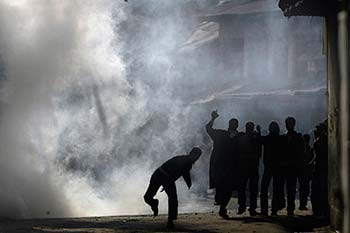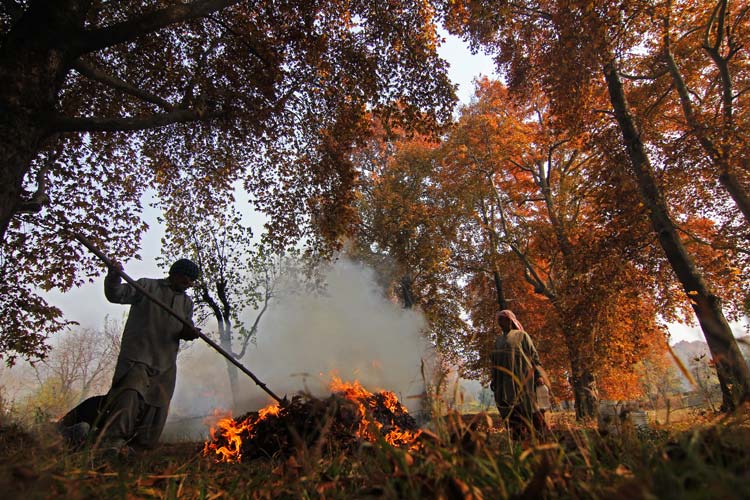Eid Al Azha, the festival known for sacrificing animals, is expected to fall on August 22. There is always a high demand for animals, especially sheep and goats, as Muslims are eager to sacrifice the animals for Allah. The religious act of sacrifice lasts for four days, starting from the first day of Eid Al Azha.

As only a few days have left, the sale of sacrificial animals has gained momentum across Kashmir. Sacrificial animals have started pouring in from different areas of the valley to markets in a bid to get maximum profit in the lucrative market of Kashmir.
The traders in Kashmir have also started roaming in streets and villages with their animals to attract buyers. However, it was observed that the demands for the animals have decreased this year.
Muslims across the country celebrate the annual festival of Eidul Azha, or the Festival of Sacrifice, which marks the end of the Haj pilgrimage to Makkah, and in commemoration of Prophet Abraham’s readiness to sacrifice his son to show obedience to Allah.
The tradition of Eidul Azha enjoins all Muslims who can afford a sacrifice to do so. To this end, Muslims across the nation purchase livestock such as cows, goats, sheep and camels to sacrifice.
It is believed that the meat of the sacrificed animal must be distributed in three equal parts among neighbors or friends, family members, and poor people. This act symbolizes their willingness to give up things that are close to their hearts or benefit them, in order to follow Allah’s commands.
In Kashmir, the tradition of storing meat for a long time is very old and people try different ways to preserve the sacrificial meat.
Meat can be stored safely for weeks, months, or even years if preserved properly. Keeping meat cold in a freezer is the most obvious method. However, there are other ways to preserve meat – some of which have been used for 1,000 years or more.
Following are the most used ways to preserve the meat:
FREEZING
Freezing the most popular way to store meat, it is quick and easy and preserves the nutritional value and flavor. Obviously, though, a freezer depends upon a supply of electrical power and may not be suitable for preparedness unless you have a source of alternative energy to power the freezer.
Freezing meat is best at 0-degrees-F, for longest shelf life. Wrap all pieces securely in individual moisture-proof packages to prevent freezer burn (or vacuum seal).
CANNING
Canning meat is convenient and economical and is not dependent upon electricity for storage. Canned foods keep for a very long time (years). The key to safe canning is to follow proper canning recipes.
CURING
Curing meat is another old preservation method that is still used today. It involves quite a bit of time and effort. It slows spoilage by drawing water out of the meat while also killing decay-causing microorganisms. Meat cured with salt alone will store well (but will be tough and dry). An early salt cure was as simple as storing slabs of meat in a barrel of salt. ‘Kosher salt’ can be used for curing meat and is a type of coarse salt which is usually made without additives
BRINING
It’s a very simple and is a traditional method of preservation. Brine is typically a simple mixture of water, sugar, and salt. The meat is preserved by being weighed down in a crock completely surrounded by brine. As with curing, you’ll need a cool area, and if you’re doing any large quantities be sure you have room to store your crocks.
BILTONG
Ideally, the meat is marinated in a vinegar solution (grape vinegar is traditional but balsamic and cider also works very well) for a few hours, this being finally poured off before the meat is flavored.
The spice mix traditionally consists of equal amounts of rock salt, barbecue spice, whole coriander slightly roasted and roughly ground, black pepper, and brown sugar. This mix is then ground roughly together, sprinkled liberally over the meat and rubbed in. The meat should then be left for a further few hours (or refrigerated overnight) and any excess liquid poured off before the meat is hung in the dryer.
However, rather keeping the meat for storage for a long time, it is better to distribute it among the people. There is absolutely no restriction on how much one should consume of the sacrificial meat, but it would be best to eat some oneself, distribute some, and give some to the poor and needy.
The Sunnah of the Prophet Mohammad (SAW) was to consume a part of it, distribute a part of it among his companions, and give a part of it to the poor and needy.















